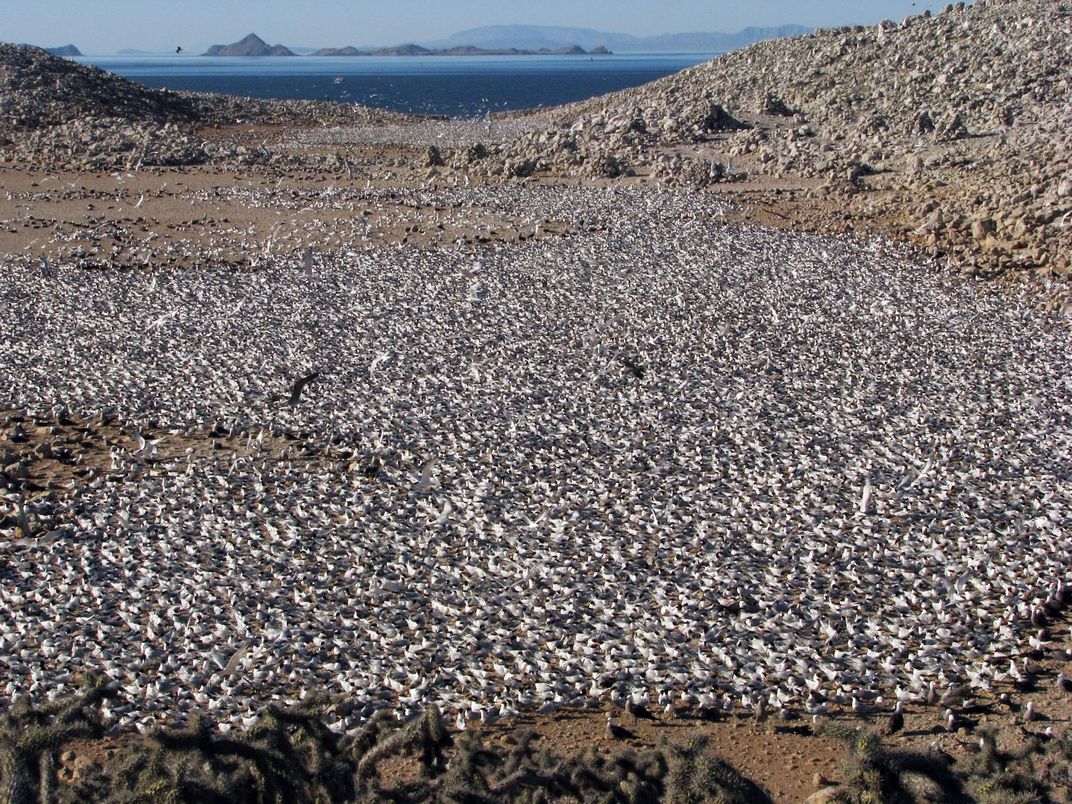Warming and Overfishing Sent Seabirds Flocking to California
Mexico’s elegant terns have begun nesting farther north in years when their traditional food is scarce
/https://tf-cmsv2-smithsonianmag-media.s3.amazonaws.com/filer/4a/c5/4ac5688c-3405-496a-8386-5ee84d431a8e/istock_000064474375_medium.jpg)
The Mexican seabirds called elegant terns have had a rocky history. Thanks to invasive species gobbling up their eggs and El Niño events depleting their food supply, the birds have seen their numbers rise and fall for decades. But they weathered those trials and steadfastly held to their traditional nesting grounds off Mexico's Pacific coast.
Now, however, a one-two punch of climate change and overfishing has the elegant terns moving into California by the thousands, scientists report today in Science Advances.
“The elegant tern is unique to the eastern Pacific,” notes Enriqueta Velarde of the University of Veracruz in Mexico, who has studied the birds since 1979. The terns migrate on a long path from wintering grounds in Chile and Peru north to their breeding grounds on Isla Rasa, in the Gulf of California. Dependent on small fish such as sardines, the birds' reproductive success has been an indicator of the gulf’s health, accurately predicting food availability for species such as blue whales and sea lions.
In the late 19th century, people came to Isla Rasa to mine the island for guano—bird poop—to be used as fertilizer. With the people came rats and mice, and the invasive rodents began eating the terns' eggs and chicks, putting a dent in the population. When the guano mining ended in the early 20th century, people began harvesting tern eggs by the thousands, taking as many as 500,000 eggs in a single year. But egg hunting was outlawed in the 1960s, and the rodents were finally eliminated by 1993, and the elegant tern population began to rebound. The number of nesting pairs increased from 15,038 in 1980 to more than 100,000 in 2013.
The birds were still plagued by El Niño events, during which the eastern Pacific Ocean warms and food becomes scarce. In those years, the terns were unable to make nests or had to abandon them, but the population still stuck to Isla Rasa. In 2003, though, “we noticed that the elegant terns left the island and did not even attempt to nest,” says Velarde. After that, colony desertion became a frequent phenomenon, occurring in 2009, 2010, 2014 and 2015. Velarde and her colleagues wondered, “Where did the terns go when they abandoned their traditional nesting grounds?”

The answer: north to California. Just a few hundred pairs of elegant terns nested in San Diego Bay from 1959 until the 1980s. But then some years saw the population skyrocket, peaking at more than 22,000 in 2014. When the nest count data from California was combined with data from Isla Rasa, a clear pattern emerged. “Every time the terns deserted Rasa, there was a huge peak in numbers in San Diego,” Velarde says.
Two things were happening near Isla Rasa to push the terns out, Velarde and her colleagues found. The waters in the Gulf of California were abnormally warm in some years. When that happens, a layer of warm surface water prevents the upwelling of cold, nutrient-rich water from the deep. Without that water, the small pelagic fish that the elegant terns eat disappear. The other factor was overfishing. Every year that the terns abandoned Isla Rasa had been preceded by a season of intense sardine fishing. That delivers “a combined blow to marine productivity and drives seabirds away,” Velarde says.
Oceans are gradually warming globally, and that is likely playing a role in the situation in the Gulf of California. Still, if the sardine fleet cuts back, Velarde says, the terns may find that conditions are fine for staying on Isla Rasa. If the birds keep heading for southern California, though, they could run into the intense coastal development that has already caused trouble for other nesting seabirds, such as the California least tern, which is now endangered.
For Velarde, the elegant tern offers a cautionary tale. The fishing fleet in Mexico depleted the sardine fishery there without considering what effect that might have on the whole ecosystem. Now, she says, both the region’s fishery and the species that depend on those fish seem to be collapsing.
/https://tf-cmsv2-smithsonianmag-media.s3.amazonaws.com/accounts/headshot/Sarah-Zielinski-240.jpg)
/https://tf-cmsv2-smithsonianmag-media.s3.amazonaws.com/accounts/headshot/Sarah-Zielinski-240.jpg)